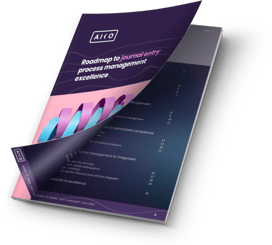In our previous blog entry, we wrote about how much Aico can save time and reduce errors in the record to report area. Now we will evaluate the journal entry automation potential. What are the benefits and savings according to our customers? Where do the time savings of 50% come from?
The old way of doing journal entries
When we started to develop Aico back in 2008, many companies entered journal entries manually into their ERP systems. Today, most companies use at least Excel import to upload data directly from spreadsheets. However, the import usually doesn’t validate the data against ERP, and accountants must spend their time resolving problems. Typically, accountants send many emails back and forth, and it becomes impossible for anybody to follow or control the process. The journal entry creator can’t be sure when the journal is posted, and the approval is still often done manually after printing the journals – if at all. Following the audit trail afterwards is difficult and time-consuming and sometimes even impossible. The process typically ends with printing and archiving of paper journals and attachments.
How is it today?
Aico solution for journal entry automation resolves these deficiencies. One of our customers summarised the benefits as follows:
“Aico combines a database of assignments and SAP input. The tool saves time and reduces the amount of duplicate work. Aico brings transparency to the process and facilitates auditing and approval processes. We can create postings and validate them at once, both in the database and in SAP. Journals are now more complete, and there is less uncertainty when preparing them, which has reduced the need for rework. We are automating recurring journals, and it has reduced manual work”.
Another customer highlights the importance of clear processes and user-friendliness:
”We find it important that the tools are easy to use and that there are different user roles. Once we have the same tools implemented in all countries, we will streamline operations and save time.”
Aico´s competitive edge lies in the real-time integration to the underlying ERP system. It is also possible to post a journal into a future period because Aico stores journals in a queue until it opens. Companies having multiple ERP systems benefit the most because Aico can integrate with multiple ERP systems simultaneously. In addition, flexible approval workflows enable, for example, approval after posting, which makes the hectic financial close process less challenging when you don’t have to wait for approvals.
How to reduce time spent on journal entries by up to 50%
-
Aico automatically posts recurring and reversal journal entries
-
You can create new journals by copying previous postings
-
You can create a journal containing data for several accounts and companies
-
No need for journal entry hard-copies – Aico archives journals and supporting evidence digitally
-
Aico attaches supporting documentation to the journal and the audit trail is complete
-
Approve journals digitally within Aico
-
Validate journal data against your ERP system before posting to increase data quality
-
Drill down to journal details from an external system, for example, to review supporting documentation
Aico also provides added value that is difficult to measure in terms of money only. The solution significantly reduces risks with real-time process visibility and control. Complete audit trail for everything that is happening in the system is another step towards risk reduction. It is easy to document the process and communicate it to the people participating in the process. Transparency, audit trail, and control benefit both management and participants alike. This benefits especially those companies that have outsourced their processes or have GBS/SSC sharing responsibilities with business.
What about the future?
The future is already here! The Aico Journals software is live linked to other financial close activities and your ERP system. Journal entries can be generated automatically from account reconciliations to correct postings on an account. All this and more can be achieved in a single user interface and followed real-time from dashboards!

Use this roadmap to learn where you are in your journal management journey and how to move forward.


